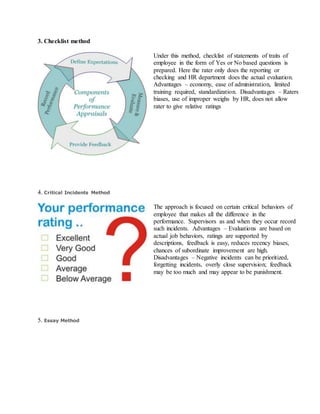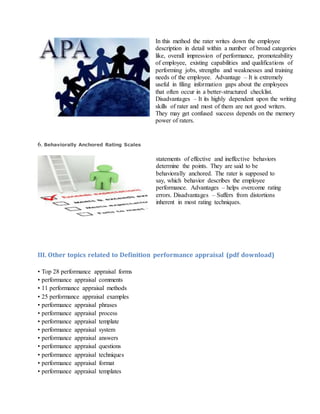The document provides a comprehensive overview of performance appraisal definitions, methods, and challenges in effectively evaluating employee performance. It emphasizes the issues related to subjective evaluations due to the use of generic standards, while calling for more specific and objective measures. Various performance appraisal methods are discussed, highlighting their advantages and limitations in the context of federal agencies.








